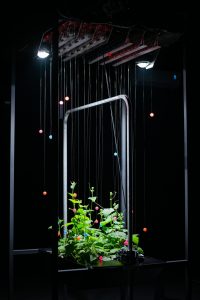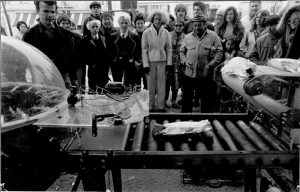 Together with Zvika Netter, Michal Rinott — you might remember Sonic Texting and the brilliant Laughing Swing — recently created and taught a course called IDHO – “Interaction Design Hands On” at the Holon Institute of Technology in Israel.
Together with Zvika Netter, Michal Rinott — you might remember Sonic Texting and the brilliant Laughing Swing — recently created and taught a course called IDHO – “Interaction Design Hands On” at the Holon Institute of Technology in Israel.
The workshop lasted one semester with students coming both from Electric Engineers and Industrial Design, all in their third year.
The final projects included a shower in which the water is controlled by singing, STEPPO – a game controlled by pillows and the next best thing in door-knocking communication.
I thought that the course would provide me with a great opportunity to ask Michal what happens when engineers meet designers and what’s the state of interaction design in Israel.
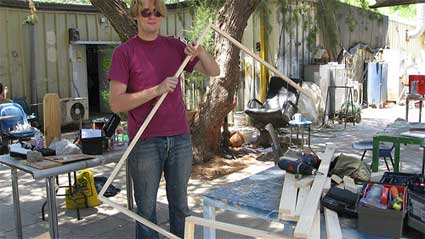 Building the Singing Shower
Building the Singing Shower
The course combined students from the engineering and the design department How well did the collaboration go? Was the interaction the one we can expect (the engineers solving the tech issues, the designers making everything pretty)? Or did some surprising interaction and ways of working arise between these two groups?
We were about half designers, half engineers. At the extremes, things did work as expected: circuits were built by engineers and 3D-models were created by designers. But in the middle there was a lot of variety based on the people’s skills. For example, In the Steppo project, one designer built the electro-mechanics of the pillows and also created the game sound, the engineer built the electronics and also had a lot to say about choice of fabrics, and the other designer defined the game behavior and created the game graphics. In the R-Tube radio project, two designers made an awesome working prototype “on their own”.
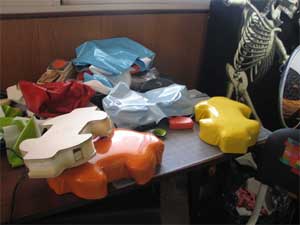
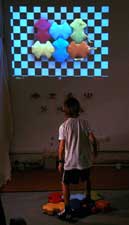
Really, the disciplines – engineering, design – were less important than the attitude of the specific person. Among both groups were people who were open, curious and fearless – and were willing to tackle anything, be it brainstorming concepts, taking something apart or designing an installation. Others tended to stay more in their comfort zone. But by the end of the course I think everyone had done a good amount of things for the first time.
More than anything, the challenge was the work in groups. During most of the course we formed groups by picking names out of a hat! Making sure that groups were balanced between disciplines. This probably made things more difficult for some people, but gave them a bigger variety of work experiences. Naturally, some groups had better “chemistry” than others, but in the end all groups came out with projects they were happy with, I think.
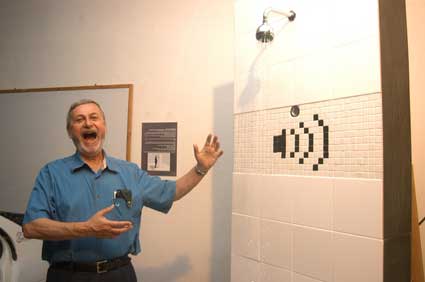 How much and what do you think they have learnt from each other’s approach after the course?
How much and what do you think they have learnt from each other’s approach after the course?
Quite a bit, I think, about work methods and styles. I remember one of the engineers saying at some point “do you designers always spend so much energy on a course!??”
The designers are used to working on a project base, and going on “deep dives”, intense periods where they become obsessed with something and will go sleepless to get it right. The engineers work in a more balanced structure – they are used to classes and exams, and to distributing their energies carefully between things. In that sense the engineers had a bit of a culture shock.
The designers, I think, got an impression of the very serious, tedious and long-term process of making something really work. For example, the engineer who was the “brain” behind the Singing Shower’s electronics would arrive to every lesson with one additional aspect solved, in an incredibly methodological way, till he got the whole system working.
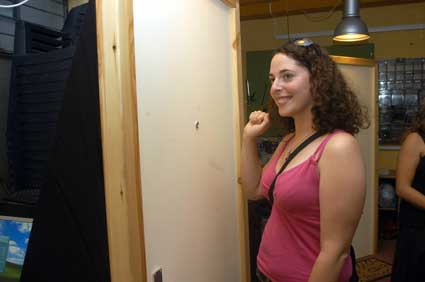 The description of the course says that you used an “approach of hacking”. Could you be more specific and give us examples of that?
The description of the course says that you used an “approach of hacking”. Could you be more specific and give us examples of that?
The course was all about “hands on”. Zvika Netter, who taught the course with me, is a natural born hacker, and this is one of the great things he brought to the course. There was a lot of discussion like “where can you find this behavior you are looking for in an existing object”?
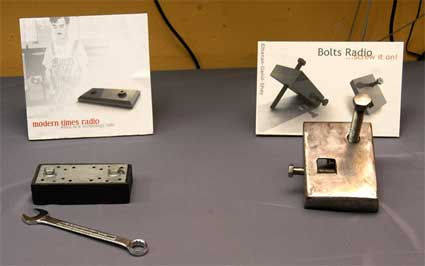
Our midterm project involved creating a new interaction for a radio, and the R-tube radio, Roulette radio, Modern Times radio and others are all 3-Euro radios with new behaviors. But the hacking approach wasn’t only about the electronics, but generally about trying to re-use and modify existing things. A sewage pipe found its way into one of the projects!
I have to admit though, that in the final exhibition there was a natural tendency towards perfectionism and quite a bit of new stuff was purchased.
How dynamic is interaction design in Israel? Does the country have a broad market for it? Many schools? Stimulating perspectives?
From an academic perspective, Interaction design has some presence in the three main design schools here, but there’s no full study program. Things are changing these days, though. The fact that myself, an interaction designer with no product design background, am faculty in an industrial design department (at the Holon Design School) is part of this change, as well as the IDHO course. There are other promising signs.
From a country perspective, Israel is pretty big in technology (it is sometimes referred to as “The Silicon Wadi“), and Israeli design is very dynamic. There’s a lot of creativity and innovation around. So I think it’s a good place for things to happen in interaction design! There is a lot of software being developed in Israel so there’s quite a lot of activity around GUI design, somewhat less around consumer products.
In general, a lot of the Israeli technology is about firewalls, communication systems and infrastructures. I’ll be happy to see these same technologies used in poetic and surprising ways…
Thanks Michal.



